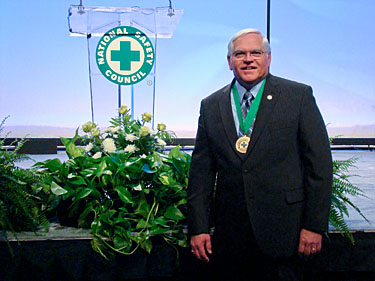This post is from Gary A. Higbee, one of SafeStart’s senior consultants and the co-author of Inside Out. Learn more about Gary’s many accomplishments in the safety industry and find a selection of his many articles at safestart.com/gary.
Recently I published a blog post on what a SafeStart trainer needs to do to be an effective trainer. Now I want to concentrate on frontline leaders. As you might guess, there are similarities between what trainers and leaders should do. But there are some important differences too.
Frontline supervisors are caught between upper management and the workforce. There are few jobs that are as difficult as being a frontline supervisor—balancing production, safety and human resource needs can be very challenging. It’s important for this group of leaders to be strong in communication and performance in all areas, especially safety.
Here are some tips for frontline leaders to get the most from their SafeStart implementation:
- Know SafeStart like the back of your hand. This means having a thorough understanding of the four states, four errors and the four critical error reduction techniques. You need to show employees that you take SafeStart seriously enough to walk the talk and incorporate the terms into your vocabulary.
- Practice the CERTs. Actively use SafeStart at home and introduce it to your family.
a. Work on a habit and actively share what that habit is with your work team. Discuss how the habit development is going and talk about successes and challenges you’ve experienced. It will give you more credibility and encourage your workers when you ask them about the habit they are working on.
b. Discuss at least one example of analyzing a close call to prevent a more serious mishap. This shows that it’s possible to improve personal safety performance—and that you’re dedicated to doing so yourself.c. Be able to explain the value of watching others to raise safety awareness and to adjust behavior to avoid making an error. This is something we often do naturally but it’s one of the most difficult CERTs to explain. Here’s one example: if you notice another car following you or someone else a little too close you will automatically check your own following distance and adjust accordingly.
d. Self-trigger is another CERT we often do naturally but when we fail to self-trigger the results can be serious. The problem tends to be when we don’t self-trigger soon enough. It is important to recognize the states within yourself in order to be able to trigger on them as soon as possible. - Come up with a number of personal stories that prove you know what SafeStart is all about. Make sure the stories meet all four of the components of a good SafeStart story. Your stories will also show that the safety initiative is universal, as it applies to everyone regardless of job title. The stories should always support the critical error reduction techniques.
- Attend Rate Your State training and practice using the communication skills you learn on a regular basis. The is the easiest method to help with one of our most pressing problems—ineffective communication. This starts with improving safety communication but you will discover very soon that RYS helps with all types of communication: safety, quality and productivity.
- Understand that supervisors can cause people to compromise safety (specifically by being in one of the states that lead to injury-causing errors) without intending to. Saying something like, “We have to get this shipment out by four” might cause people to rush or make a poor decision, both of which elevate the risk of injury.
Following these tips will set you on the right track to be an extraordinary leader. Be sure to never use SafeStart or any other progressive safety training as a disciplinary tool. Show your staff that SafeStart is for everyone and it applies everywhere—it starts with you.

